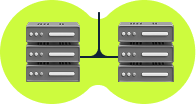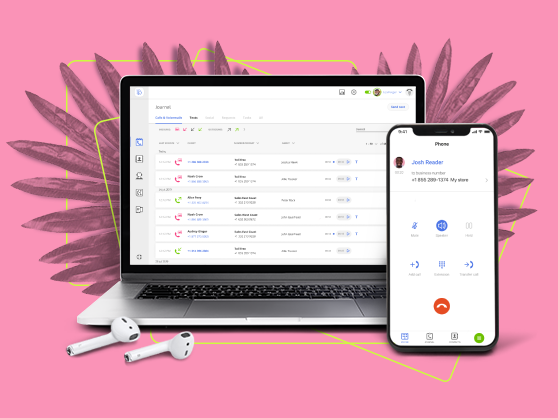We live in a world populated by digital tools, promising to help a business work faster and become more successful. Among these, some of the first-hand helpers are sales tools.
According to a HubSpot report, 35% of sales leaders track the use of tools for sales as a productivity metric. For them, the best sales tools to have in their arsenal are those that automate the sales pipeline and increase the odds of success without costing a lot of money or time.
If you’re wondering how not to get lost in all the market has to offer and choose the right option for your company, we’ll walk you through the seven types of tools for sales you must know in 2025 so you can determine which ones would be the most beneficial to your company’s long-term goals and growth.
What are sales tools?
Sales tools are applications and digital tools built for and used by sales professionals to optimize their work and help them succeed with their goals.
It’s an umbrella term for various sales tools, such as sales acceleration, CRM (customer relationship management), sales intelligence, lead handling and prospecting, sales automation, and more.
Importance of sales tools
Sales is a fast-paced and high-pressure industry. Salespeople are constantly pushed for more leads, conversions, and revenues. However, with the right tools, this process could be streamlined, which is why they are so beneficial for businesses.
- Understand which prospects are most likely to convert. Focus on prospects who you’re more likely to be successful with rather than chasing prospects who are unlikely to purchase from you. This way, you won’t waste the time and effort you could allot on the right prospects. Plus, you can ensure you engage in a relevant manner.
- Determine when to reach out to prospects. Timing is key. You should know the correct frequency and time when to reach out to prospects. You don’t want to keep touching base repeatedly to be annoying, but you also don’t want to barely keep in touch so that you’d be forgotten. Also, analyze the times or days your messages will likely be opened or engaged with.
- Save time on tedious and time-consuming admin tasks. Opening emails, keeping records, preparing reports and documents, and data entry are only some of the most time-consuming admin tasks. These non-essential tasks are important but don’t directly relate to or impact your business’s core functions. Still, they have to be done. Sales tools can save time and automate some of these admin tasks, so you can focus more on what’s important.
- Automate the sales process. The sales process is a multi-step procedure of bringing a lead to the status of a customer and supporting the customer throughout the sales journey. Tools for sales automate this procedure by pre-qualifying leads, automating email marketing, invoices, and sales orders, and overall making the sales pipeline more efficient.
- Demand for modern tools from employees. In a modern world, employees are also demanding modern solutions. Using traditional methods could push your employees away because of processes that aren’t optimized, which wastes time and resources. Hence, implementing modern sales tools helps with your sales goals and increases employee satisfaction.
How to choose sales tools
When you get a sales tool, you’re getting an entire system. But—it’s not as intimidating as it sounds. Still, you should know what each tool does—what it’s for, which problems it solves, and whatnot. Then, all your tools should work seamlessly together.
There’s no one-size-fits-all solution. Company needs can vary from business to business. The set of sales tools that work for one company doesn’t mean the same set of tools would work for you.
With that, here are some tips on choosing your sales tools to consider:
- Make a list of your core business needs.
- Check if your core business needs align with your customers’ needs.
- Figure out what the process looks like from the customer’s perspective.
- Double-check integrations between tools.
- Evaluate your potential solutions.
- Read reviews and recommendations.
- Evaluate pricing and potential ROI.
Sales tools you should know
1. Communication
While you can use many wonderful sales software, no sale is ever made without communication. A study from SHRM showed that at least a third of sales go down because of poor communication. So, it’s essential to master your craft and avoid making mistakes along the way.
To improve business communication, you should first look at ways to enhance your writing skills and hone your conversational style. From there, you can look at some sales tools that will help simplify processes while keeping track of all communications between you and your potential client.
2. Information
Marketing is no longer about beating your chest and making outrageous claims. Nowadays, it’s more about being useful, relevant, and specific than any other time in history. That’s why tools that focus on information are so critical in sales.
These sales tools help you identify your prospects’ pain points, determine how your product or service can address them, and make it easy for them to buy from you.
For example, sales automation tools help salespeople remain organized with opportunities and manage leads with email outreach templates and notifications on deals that are about to close. B2B sales tools that focus on information also help you get answers about your connections, networking strategies, and competition in your industry.
3. Data
To effectively tackle sales challenges in 2025, you must first understand your target audience and what they need. This means having an abundance of accurate data. With big data being so readily available, it can be tempting to use as much as possible when crafting strategies for individuals and small businesses.
However, just because you can doesn’t mean you should. Sales teams must remain conscious of how personal data is used and how public data can still be helpful for B2B purposes.
So, when compiling a list of the best sales tools in 2025, consider only those legally permitted in your country. Ensure also that the tool you purchase allows users to limit specific datasets and view their information privately before deciding which ones suit your needs.
4. Customer feedback
The internet is your biggest tool when it comes to sales. With social media, blogging, and email marketing all at your fingertips, you can easily find out exactly what kinds of sales tools are working and what aren’t.
To succeed, you must be able to take an honest look at your strengths and weaknesses. Connecting with customers via different sales tools will give you valuable information about who they are and how they interact with your brand. This information can also help you reach more potential clients while providing them with better service than before.
When implemented correctly, sales tools software allows you to gather important customer data, enabling you to make improvements based on real numbers and information rather than gut feelings or opinions.
5. Coaching
Sales tools that focus on coaching and productivity (like HubSpot’s CRM) will be a top consideration for B2B sales teams. These companies need tools that give their employees everything they need to close deals, manage leads, and understand their customers’ needs.
These are all things that require specific knowledge and practice. So, it makes sense that one of your top considerations when choosing a sales tool is its ability to coach you in sales tactics and strategy. Good coaching creates engaged workers who can execute at high levels—and that’s precisely what you want from your team members on your sales team.
For example, a specific sales tool combines data analytics with an AI-powered sales assistant that coaches users through each sales stage. The tool also leverages machine learning to identify patterns in customer interactions and coach reps accordingly. Such a platform will ensure that every team member can access information, helping them do their jobs more effectively.
6. Objectives
To achieve your sales objectives, you’ll need tools that focus on them. In other words, sales tools specifically designed for your current and future sales tactics will give you a competitive advantage and ensure you stay top-of-mind with prospects.
For example, lead qualification software helps businesses close more deals by identifying high-quality leads. Meanwhile, other sales tools allow marketers and salespeople to send personalized emails (that increase conversion) without actually having to write them.
Both functionalities are essential B2B sales tools because they were built around specific objectives—lead generation and lead qualification—and therefore deliver results by focusing on them.
7. Tracking
Lead tracking is a critical part of creating a successful sales funnel. In fact, a survey by the CMO Council revealed that poorly managed leads cost businesses at least $1 trillion per year. By collecting leads with opt-in forms on your website, you can start tracking which content attracts which prospects—and then feed those preferences into future email marketing campaigns.
This kind of customer data management is essential for modern sales reps who want to close deals by using tailored pitches that cater directly to their buyers’ interests. Fortunately, lead management systems will give you one important weapon for reaching out and closing deals with some clarity about what prospects need from you at every step in their journey.
8. Copilot AI Agents
A Copilot AI agent is an AI-powered assistant created to help with tasks by providing real-time suggestions, automation, and insights. In a sales context, a Copilot AI agent can act as a smart assistant that boosts the efficiency of sales teams by automating repetitive tasks, offering data-based recommendations, and improving customer interactions.
It can qualify and score leads, prioritizing high-potential prospects based on intent signals. It sends personalized emails, messages, and follow-ups through automated outreach, ensuring no lead is left unattended. By integrating with CRM systems, it logs interactions, updates records, and tracks deal progress, saving valuable time.
Integration strategies: a simplified guide
Integrating sales tools into your business systems can significantly improve operations. Here’s a brief guide for effective integration:
- Evaluate current systems: Assess the functions and limitations of your existing software. This is essential for understanding how new sales tools can fit into and improve your operations.
- Define integration objectives: Clearly outline your goals for this integration, focusing on areas such as data management improvements, process automation, or communication enhancements.
- Select compatible tools: Choose sales tools that integrate well with your existing systems, focusing on those with flexible integration options.
- Plan the integration: Develop a clear plan with a timeline and the resources needed to minimize disruption during implementation.
- Conduct data migration: Carefully move relevant data to the new tools, ensuring accuracy. IT support may be required for a smooth transition.
- Test the system: Before fully implementing, test the integrated system for any issues, mainly focusing on data accuracy and workflow processes.
- Train team members: Ensure your team is well-equipped with the knowledge to use the new system.
Monitor and refine: Continually assess the system’s performance, making refinements based on feedback and performance metrics.
Get the best sales tools for your business now
Successful entrepreneurs understand that success depends on more than their hard work. They also know that tools play a huge role in their business’ success. As shown in the statistics by SugarCRM, 80% of businesses spend at least $1,000 on technology every year to acquire the right tools to do their regular operations effectively.
A lot has changed over time, and an updated list of sales tools and techniques should be one of your priorities. If you’re a sales professional looking to grow your business in 2025 and the coming years, you need to keep up with the trends by learning about and implementing new sales tools as they become available.




























